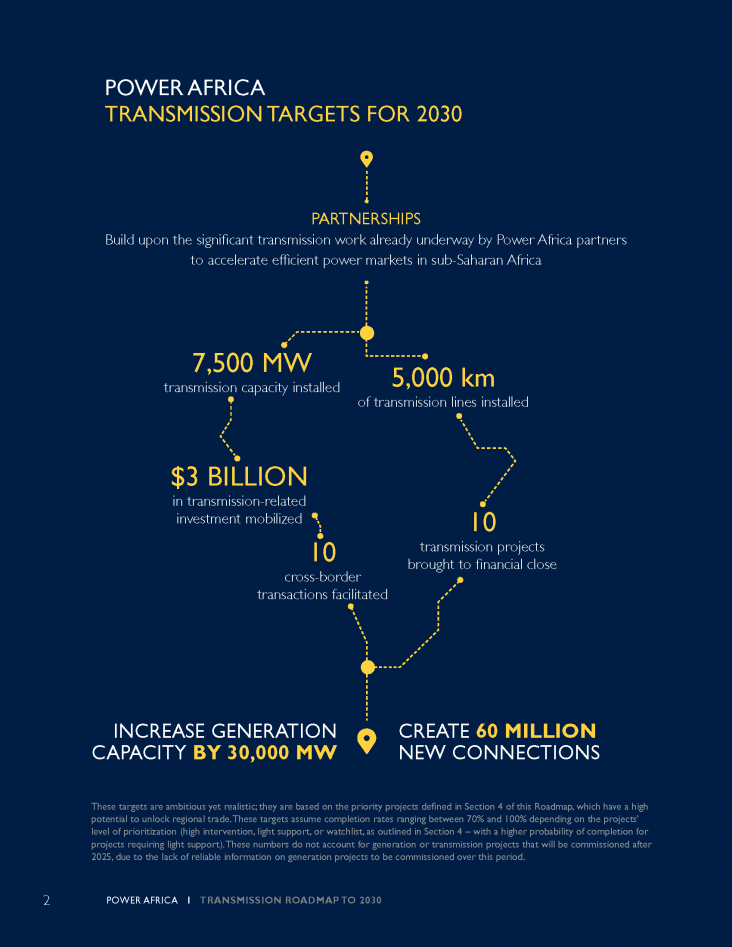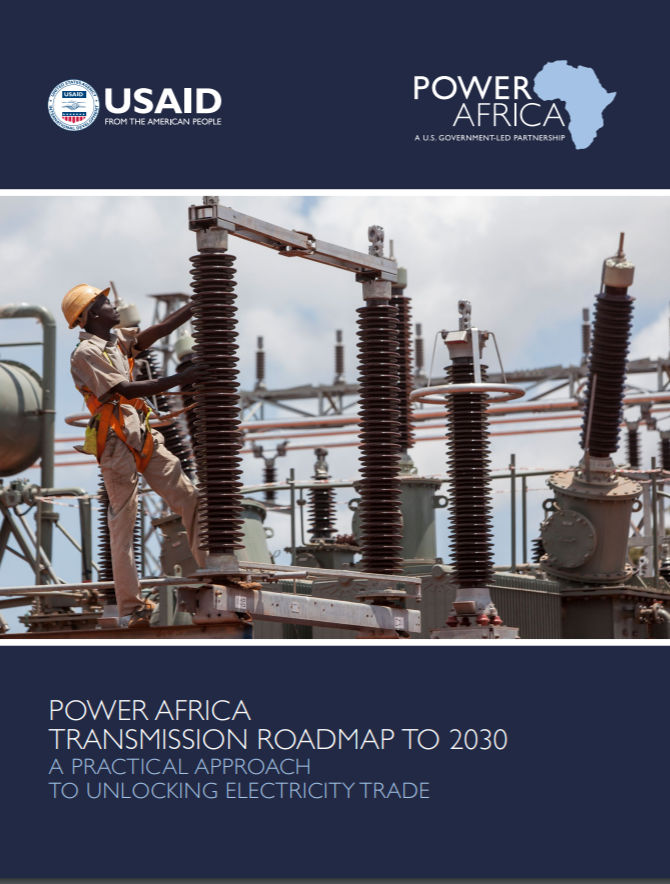- Where We Work
- Africa
- African Union
- Power Africa
- Trade and Investment
- Angola
- Benin
- Botswana
- Burkina Faso
- Burundi
- Cameroon
- Central Africa Regional
- Central African Republic
- Chad
- Côte d'Ivoire
- Democratic Republic of the Congo
- Djibouti
- East Africa Regional
- Eswatini
- Ethiopia
- Ghana
- Guinea
- Kenya
- Lesotho
- Liberia
- Madagascar
- Malawi
- Mali
- Mauritania
- Mozambique
- Namibia
- Niger
- Nigeria
- Republic of the Congo
- Rwanda
- Sahel Regional
- Senegal
- Sierra Leone
- Somalia
- South Africa
- South Sudan
- Southern Africa Regional
- Sudan
- Tanzania
- The Gambia
- Uganda
- West Africa Regional
- Zambia
- Zimbabwe
- Asia
- Europe and Eurasia
- Latin America and the Caribbean
- Middle East
- Mission Directory
Speeches Shim
Power Africa Roadmap 2030

This Roadmap shows how the collective efforts of Power Africa’s more than 120 public and private sector partners fit together to achieve our ambitious goal of adding 30,000 megawatts (MW) and 60 million connections in sub-Saharan Africa by 2030. The Roadmap outlines Power Africa’s three strategic pillars: Generation, Connections, and Unlocking Energy Sector Potential. These three pillars will help our partners to accelerate energy transactions by working with African governments to create the policy, legal, and regulatory frameworks needed to attract private sector investment in the energy sector.
This Roadmap does not provide a comprehensive breakdown of all Power Africa activities in every country, of every potential transaction, or of every partners’ activities. Rather, it highlights work that Power Africa’s partners are engaged in all over sub-Saharan Africa to illustrate the broader, strategic, and collective effort that is required to implement and sustain our stated goals and objectives.
It provides energy practitioners, academics, politicians, development partners, and other interested parties with insight on how electricity access in sub-Saharan Africa can be doubled if all stakeholders work together to advance that common goal. Through greater coordination, we will be able to leverage our diverse tools and expertise, ensure coherence, and avoid duplication of effort, maximizing our reach and impact across the continent. The Roadmap offers tangible plan for how to make our common vision of an economically vibrant sub-Saharan Africa a reality by developing Africa’s rich and abundant energy resources in a rapid, transparent, inclusive, and sustainable manner.

Transmission Roadmap to 2030
At the November 2018 Africa Investment Forum in South Africa, Power Africa launched the Transmission Roadmap to 2030: A Practical Approach to Unlocking Electricity Trade. The Power Africa Transmission Roadmap is designed to move the regional transmission agenda forward by unlocking cross-border electricity trade through priority projects, unsticking the bottlenecks they face, and supporting existing coordination mechanisms to implement them. The imperative to shift power across borders is in line with Power Africa’s commitment to increasing access to electricity in sub-Saharan Africa.
Power Africa Gas Roadmap to 2030
At the June 2018 World Gas Conference in Washington, D.C., Power Africa launched Gas Roadmap to 2030 for sub-Saharan Africa (SSA). The Roadmap outlines a plan for achieving up to 16,000 megawatts of additional gas-fired power generation in SSA by 2030. Power Africa’s Gas Roadmap estimates that U.S. companies could invest in, or compete for, $175 billion worth of gas power projects in SSA, with the potential for at least $5 billion of U.S. exports of liquefied natural gas by 2030. During the conference, Power Africa also released geographically targeted Gas Strategy for Southern Africa, which guides regional gas advancement and economic growth.
Power Africa Gas Roadmap for Southern Africa
This report provides the United States Agency for International Development’s (USAID) Southern Africa Energy Program (USAID SAEP) with a regional gas roadmap it can use to prioritize its support for gas-to power projects. The roadmap, known as the Southern Africa Gas Roadmap, initially focuses on four Southern African countries selected amongst the countries covered by USAID SAEP: Botswana, Mozambique, Namibia, and South Africa.


Comment
Make a general inquiry or suggest an improvement.